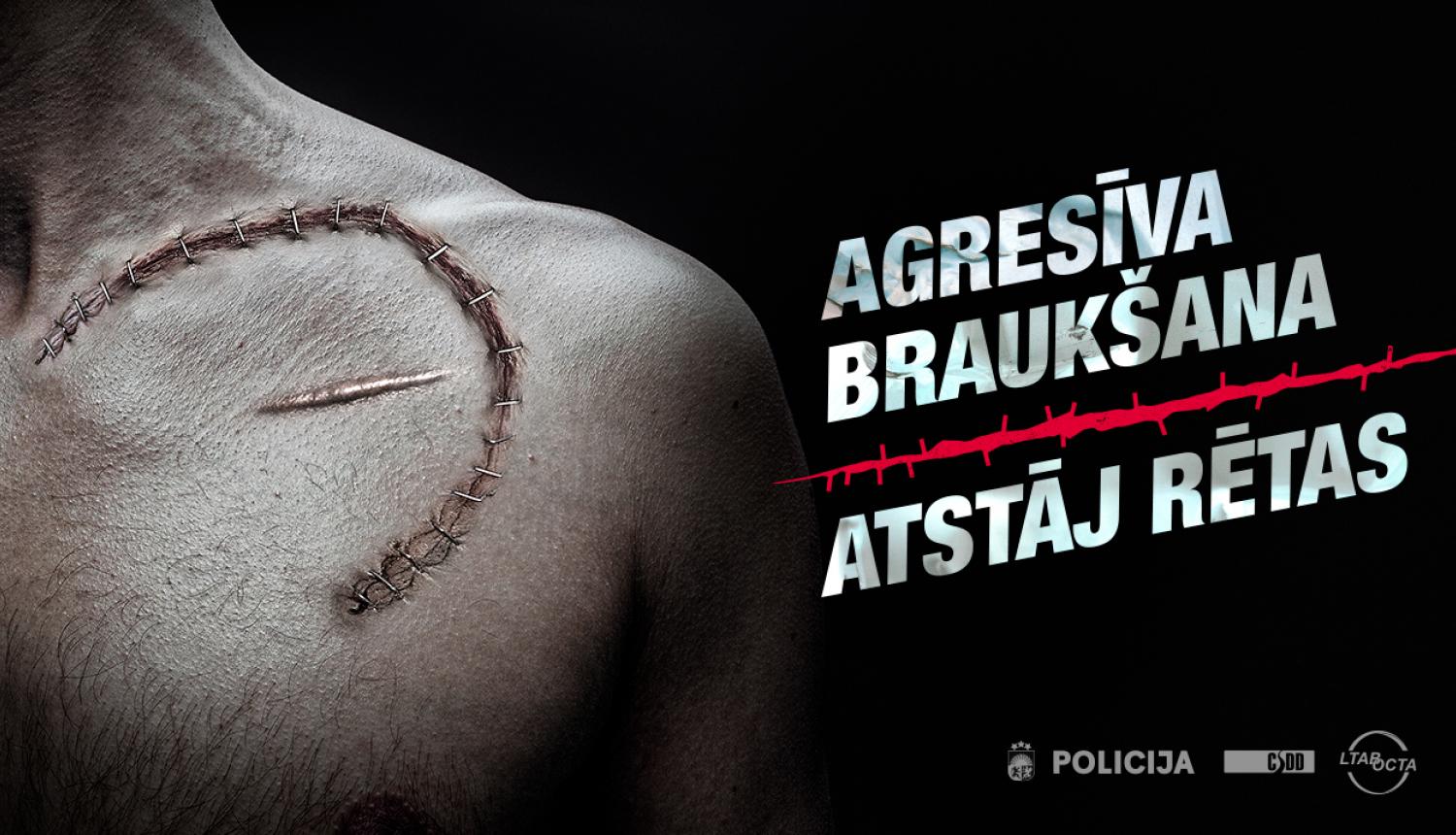Unjustified risks, revaluing drivers' skills, reckless and reckless manoeuvres and speeds: these are reasons that can lead to severe or even fatal consequences. Today, May 26, the State Police (SP) launched an informative campaign on the risks of dangerous behaviour and aggressive manoeuvres in road traffic – “Aggressive driving leaves scars”.
This year by 15 May, a total of 2065 collisions involving two or more cars (or motorcycles) have occurred, 444 road users have been injured in these accidents and ten have died. Part of them may have been victims of aggressive driving. The new campaign by the state police on “Absent driving scars” calls on citizens to think about the consequences of aggressive driving, both in physical terms and in psychological terms, of entering the road in an accident or thereby losing their loved ones.
The main focus of the campaign is young and inexperienced drivers entering road accidents due to lack of experience and overhead. To reach the audience, an expressive video has emerged as part of the campaign featuring harsh words in the artist of the popular hyphon association “Singapore Satin.” Similarly, during the campaign, a special installation has been installed in the area between Aspasia Boulevard and Satekles Street, opposite the department store Stockmann, as a stern reminder to every passing operator. T
he campaign was launched today by a video press conference, which was launched by the chief of the SP's Chief of Order, Normunds Krapsis.
“The new campaign is designed as a reminder to all road users, but we hope it will pay particular attention to the young drivers. Aggression at the wheel is not only a concern for the police: in a study conducted by the SKDS, aggressive driving and recklessness in the opinion of the surveyed population is a second place in terms of traffic safety risks. The police are actively working to prevent these risks – our equipment has more than 40 non-trafarious police machines designed for this purpose. Unfortunately, the number of penalty protocols issued in 2019 has increased by 40% compared to the previous year, indicating that the problem is still ongoing. We look forward to changing the attitudes of the public and the fact that there will be fewer and fewer such aggressive drivers on the roads, 'said Normunds Krapsis.
Juris Teteris, Head of the Directorate for Road Safety (HDRS), told the results of a study carried out by the HDRS in 2019 on the behaviour of drivers in road traffic and the treatment of the rules. “The study found that 92% of road users regard aggressive driving as a problem for Latvia. In addition, each third respondent pointed out that he had a friend or relative who had been injured in a crash caused by an aggressive driver. In order to influence this type of driver, Latvia has an infringement accounting points system – collecting 8 points, of which 6 have been allocated for aggressive driving – the driver has to attend the classes of the correction groups. Last year, about 250 people visited them. The lessons talk of aggressive driving style and its consequences, as well as stress alleviation, the suppression of anger and emotion in road traffic. “It is positive that group lessons have a positive outcome and people have no new infringements for some time, but unfortunately, in the long term, some people are returning to their normal tracks,” revealed Juris Teteris, head of the HDRS Qualification Department.
The head of the emergency medical professional team, emergency medical doctor Ieva Tiruma, told the medics about the consequences of aggressive driving: “Going to calls, I see that aggressive driving is intolerance to those around us who carry bloody events. More than half of the politraumas, which are severe injuries to several parts of the bodies, are captured directly in road accidents - 467 people last year, according to our service statistics. Another 100 people did not receive medical assistance, because of the severity of the injuries they died at the scene, often printed in the car. When you plot a view at the site of accidents, there are most common breaks in several parts of the body: damage to the large bones, damage to the spine, which often results with disabilities, and some of the victims and, unfortunately, children.”
The head of the safe-driving school and the motorist Janis Vanks shared his experience and recommendations to motorists at the conference: “I want people to understand that aggressive driving is not only a lack of speed and rapid oversight, it is any non-compliance with the rules, which constitute an aggressive driving language – no turns, no passage, no stops at pedestrian crossings. People need to learn to respect the rest of the traffic and realize that the vehicle is a weapon, it's the speed and mass with which you can harm yourself and others. These days, people who like to ride quickly have the opportunity to go to their intended route and discharge, get adrenaline and athletic pleasure. If we want to be aggressive at the wheel, you need to find the right place to do it.”
In the press conference on the psychological consequences of aggressive driving, the psychotherapist Artur Miksons and Professor of the University of Latvia Ivars Austers spoke.
According to the information gathered by the State Police, between the beginning of this year and May 24, there have been 6511 accidents on Latvian roads, with 1274 persons injured, 144 people injured. This year, 45 people died in accidents. The Road Traffic Safety Campaign “Aggressive driving leaves scars” is organised by the State Police in cooperation with the Road Traffic Safety Directorate, the Emergency Medical Service and the School for Safe Driving. The campaign is funded from the resources of the Latvian Vehicle Insurers Bureau.
Latvian campaign video: https://youtu.be/60f3SSpG2cY
Russian campaign video: https://youtu.be/2BSzpzBOCgA
Prepared by:
Lina Kalke
Senior Officer
Of the State Police
Public Relations Department.
Tel. 67075394
Mob. Tel. 29904081
E-mail: lina.kalke@vp.gov.lv



